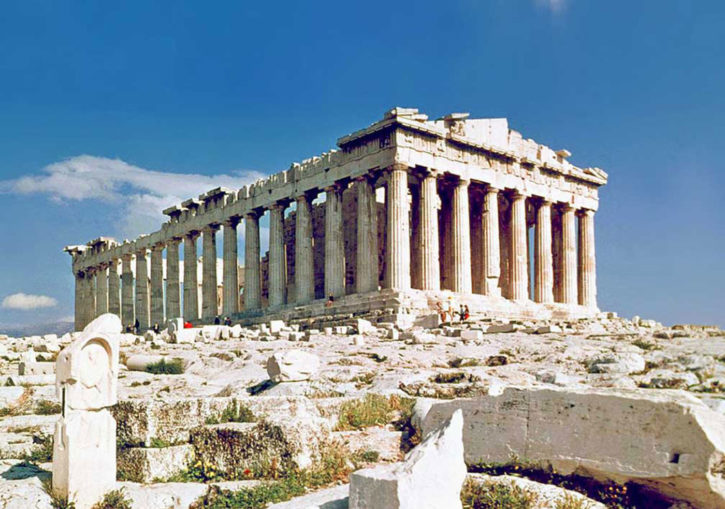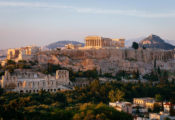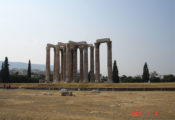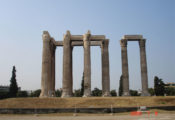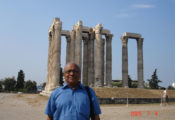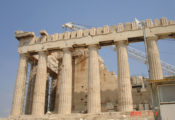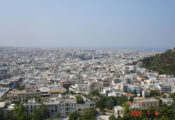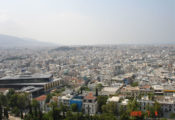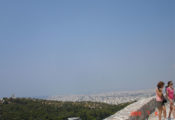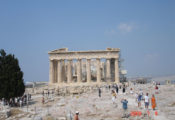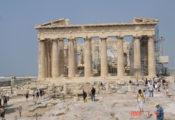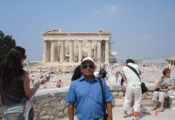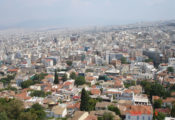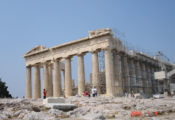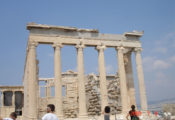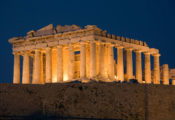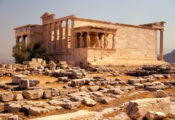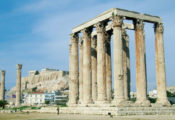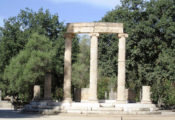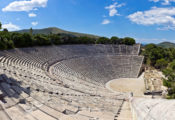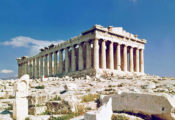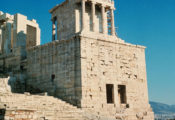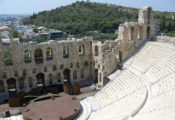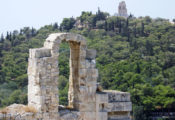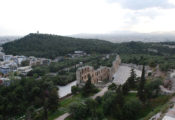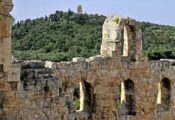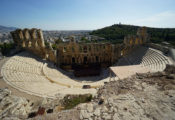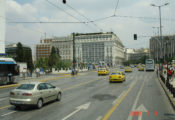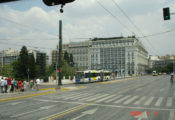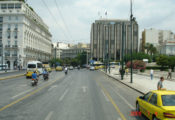GREECE
04/07/2009
Human settlement in Ancient Greece dates back from the Paleolithic era (11,000-3,000 BC). During the second millennium BC, Greece entered in to the great stone and bronze civilization: the Minoans (2600-1500 BC), the Mycenaean’s (1500-1150 BC) and the Cycladic civilization. These were the first important civilizations in Greek history.
From 168 BC and onwards, the Romans conquered Greece and a new period starts for Greek history. This is the period where ancient Greece turns into Roman Greece. That time, the country becomes the field of many important battles and new cities are constructed. Athens and the Greek culture declines, but the Greek becomes a second official language for the Roman Empire. The Romans read the classical philosophers and base their religion on the Olympian gods. In the 3rd century AD, the powerful Roman Empire starts to decline and it is divided into two pieces, the Eastern and the Western Roman Empire.
While the Western Roman Empire was gradually conquered by barbaric North-European tribes, the Eastern Roman Empire with Constantinople (Byzantium) as capital developed and was turned into the Byzantine Empire that lasted for about 1,000 years. At this point in history, Christianity becomes the official religion of the new empire, new territories are occupied and new state laws are formed. These laws will later constitute the first laws of the modern Greek state.
Athens
Athens is one of the oldest cities in the world, having been continuously inhabited for at least 5000 years. Situated in southern Europe, Athens became the leading city of Ancient Greece in the first millennium BC, and its cultural achievements during the 5th century BC laid the foundations of Western civilizationDuring the early Middle ages, the city experienced a decline, then recovered under the later Byzantine Empire and was relatively prosperous during the period of the Crusades (12th and 13th centuries).
Athens’ illustrious history stretches back more than 3,000 years. The city flourished during classical antiquity and was the birthplace of Socrates, Pericles, and Sophocles. More than just a relic of its glorious past, today Athens is a bustling and modern capital city and home to some of the country’s most important tourist attractions.
The Acropolis
04/07/2009
The Acropolis is one of the world’s most breathtaking ancient ruins. Few sights in the world compare to Athens’ Acropolis, with its Parthenon temple perched high on a rocky crag keeping watch over centuries of civilization. A reminder of the glory of ancient Athens, the Acropolis was the center of the ancient city and functioned as a citadel in its protected hilltop location.
Parthenon is the largest temple of the classical antiquity period dating from 447 BC to 338 BC. With its monumental rows of Doric columns and stunning sculptural details, the temple is an awe-inspiring sight. In the frieze on the eastern side, reliefs depict the birth of the goddess Athena.
Panathenaic Stadium & Olympic Stadium
Ancient Athens’s largest building, the Panathenaic Stadium, has a capacity for 60,000 spectators. Constructed around 335 BC during the era of Herodes Atticus, the venue hosted the Panathenaic Games where runners competed in races around the track. The 204-meter-long track was designed with four double herms, where runners would turn in the races.
Around AD 140, the stadium was updated with new marble seating by Herodes Atticus. The structure that tourists see today is a replica of the original stadium, which was rebuilt for the Olympic Games of 1896. This modern-era Olympic Stadium was created in the identical fashion as the Panathenaic Stadium, with 47 tiers of seating and a rounded southeast end.

